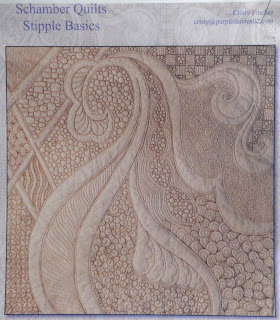
It’s taken me a long time to discover that the handwork passions I have pursued all of my life are my therapies in disguise. I’ve always felt that there was a frustrated artist lurking below my veneer of high school math teacher. I had complained for years that I was unable to meditate successfully (my mind continually moves around in ridiculous directions), and it took a highly intuitive friend to help me realize that machine quilting is my form of meditation.
I enter a different world when I walk into my studio. The physical aches and pains that accompany six decades of living seem to fade into the background –- I am about to have fun with fabric and thread, and nothing else matters. It is nearly impossible for my mind to wander too far from the project before me; the left half of my brain, which has guided me through 24 years of teaching mathematics, refuses to give up on solving the problem at hand until the right half has played with all the possibilities.
I seem to be in my most meditative state when I am guiding the quilt sandwich through the machine, following the lines of the motifs which I have drawn on the fabric, concentrating on the size of the stitches as I strive for uniformity. Sometimes there is a great deal of un-sewing, but I know this is necessary, because, in the end, I want to experience that rush of joy at seeing my vision come to life in fabric.










